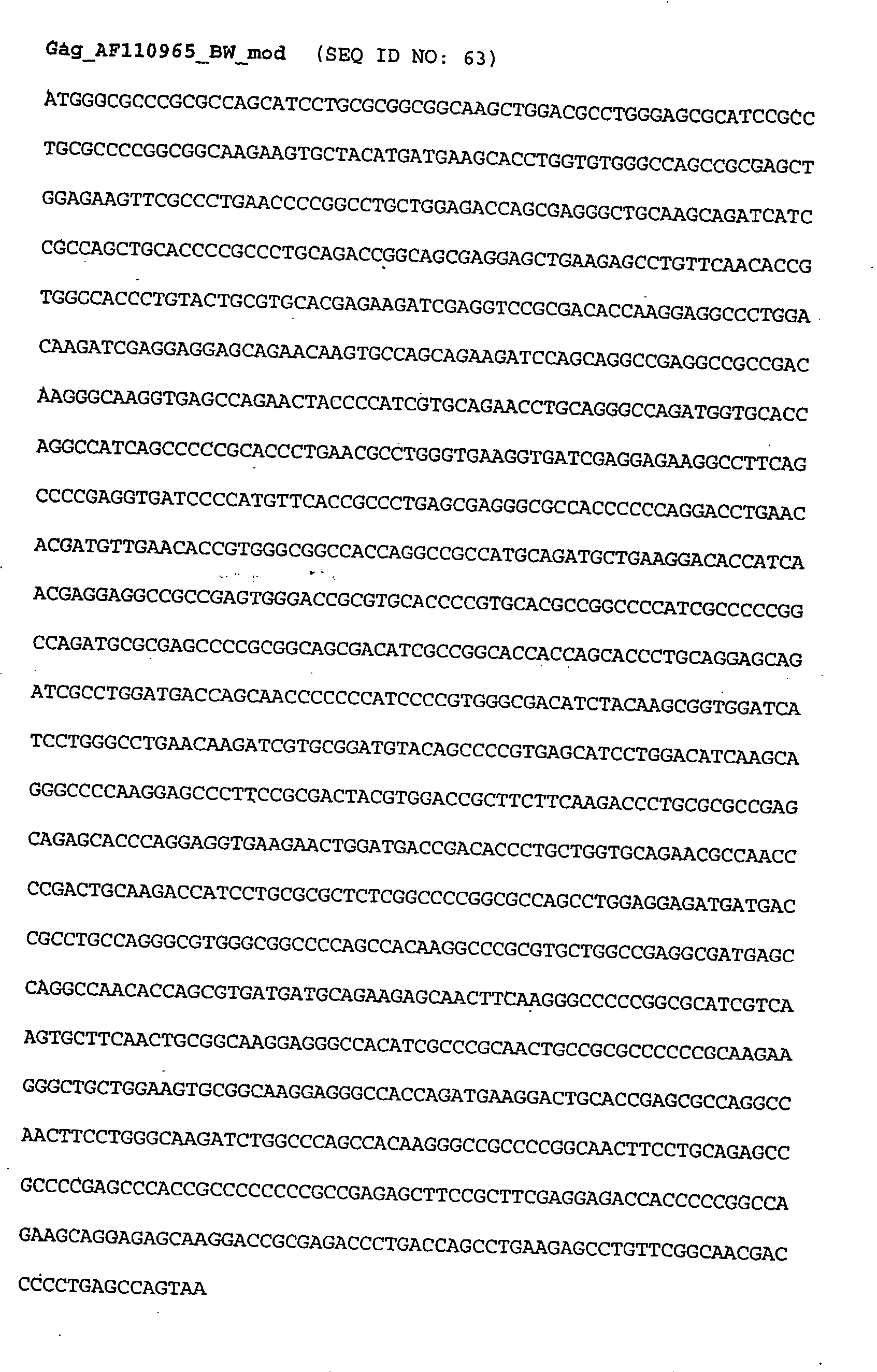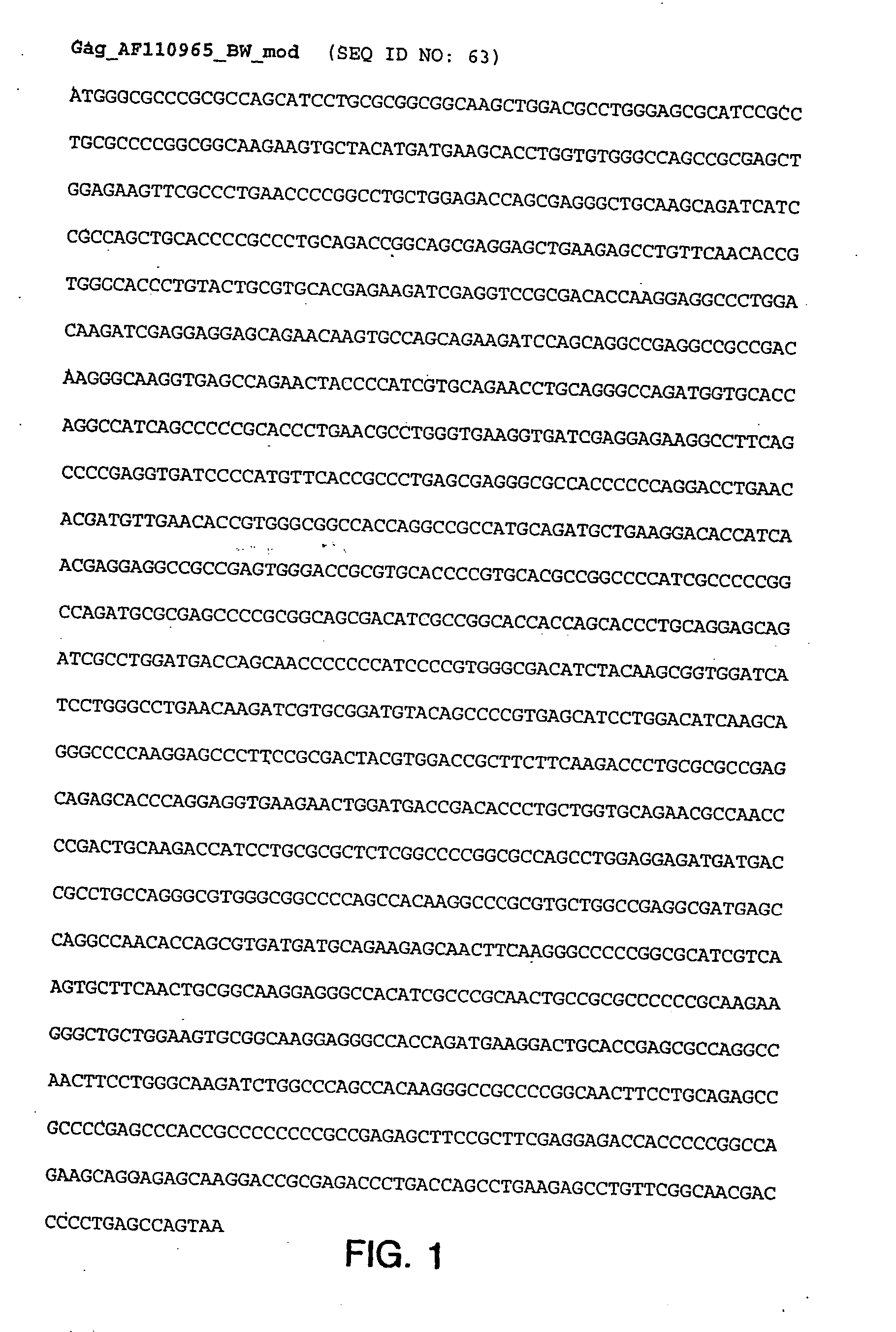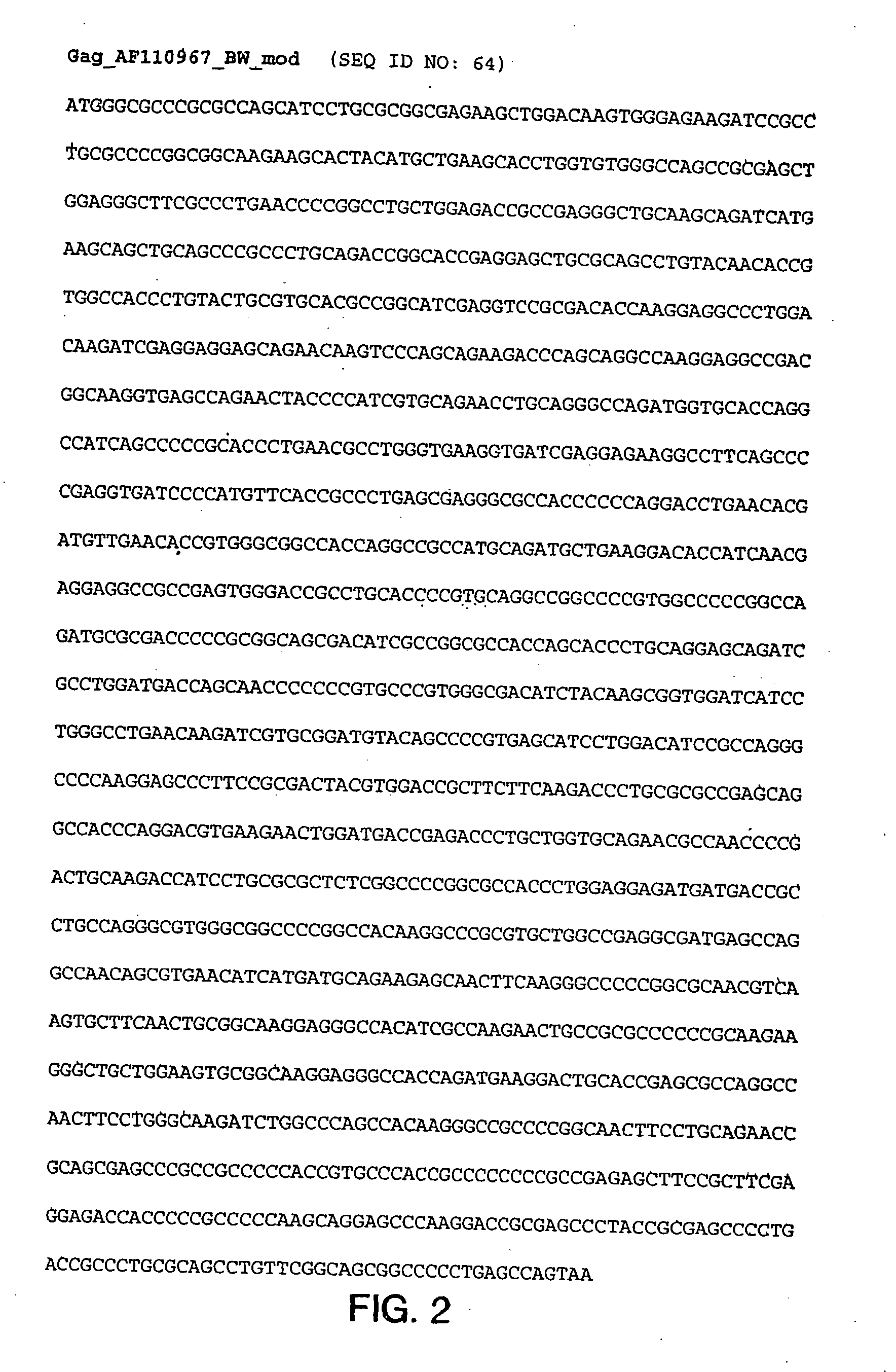Microparticles for delivery of heterologous nucleic acids
a heterologous nucleic acid and microparticle technology, applied in the field of pharmaceutical compositions, can solve the problems of not being useful for others, causing deleterious side effects, and currently used adjuvants that do not adequately induce th1 cell responses, and achieve the effect of facilitating the introduction of vector constructs
- Summary
- Abstract
- Description
- Claims
- Application Information
AI Technical Summary
Benefits of technology
Problems solved by technology
Method used
Image
Examples
example 1
Preparation of Polymer Microparticles with Adsorbed Nucleic Acid
[0229] PLG-CTAB microparticles were prepared using a modified solvent evaporation process. Briefly, the microparticles were prepared by emulsifying 10 ml of a 5% w / v polymer solution in methylene chloride with 1 ml of T.E. buffer at high speed using an IKA homogenizer. The primary emulsion was then added to 50 ml of distilled water containing cetyl trimethyl ammonium bromide (CTAB) (0.5% w / v). This resulted in the formation of a w / o / w emulsion which was stirred at 6000 rpm for 12 hours at room temperature, allowing the methylene chloride to evaporate. The resulting microparticles were washed twice in distilled water by centrifugation at 10,000 g and freeze dried.
[0230] For a typical batch of 100 mg of DNA adsorbed microparticles, 100 mg of PLG-CTAB cationic microparticles were weighed into a glass vial and resuspended with 5 ml volume of 200 μg / ml of DNA solution (i.e., the plasmid pCMV or pSINCP containing gp140 or p...
example 2
Preparation of Submicron Emulsion Microparticles with Adsorbed Nucleic Acid
[0232] A submicron emulsion formed from MF59 and DOTAP was prepared by providing DOTAP (in chloroform) in a beaker and allowing it to evaporate down to 200 ul. Tween (0.5% w / w), Squalene (5.0% w / w) and Span (0.5% w / w) were added and homogenized for 1 minute using an Omni homogenizer with a 10 mm probe at 10K revs / min in order to provide a homogeneous feedstock for final emulsification. This was passed 5 times through a Microfluidizer M110S homogenizer (Microfluidics Co., Newton, Mass.) at ˜800 psi. The zeta potential of the emulsion, which is a measure of net surface charge, was measured on a DELSA 440 SX Zetasizer from Coulter and found to be approximately +55 mV.
[0233] DNA (either 1 mg HIV-1 gp140 DNA or 0.5 mg of p55 gag DNA, present in pCMV or pSINCP) was adsorbed by incubation with the submicron emulsion overnight at 4° C.
example 3
Preparation of Elvis Vectors and Other Vector Constructs for Adsorption to Microparticles
[0234] Construction of alphavirus-based ELVIS and replicon vectors was performed using Sindbis virus as a representative example. As will be appreciated, the following may be readily applied to the derivation of vectors from any alphavirus by one of skill in the art. Approximately 107 BHK-21 cells were infected with the SINDCchiron strain of Sindbis virus (ATCC deposit VR-2643, Apr. 13, 1999) at a MOI of 1 PFU / cell. At 24 hours post-infection, after development of CPE, total RNA was isolated from the cells using the TRIzol Reagent (GIBCO / BRL) according to the manufacturer's instructions. After purification, viral RNA was dissolved in nuclease-free water, aliquoted, and stored at −80° C. for subsequent use in cDNA cloning.
[0235] Synthesis of cDNA was accomplished by PCR amplification, using the primer sets shown below (Sindbis nucleotide numbering indicated for each primer):
1CCACAAGCTTGATCTAA...
PUM
| Property | Measurement | Unit |
|---|---|---|
| Fraction | aaaaa | aaaaa |
| Fraction | aaaaa | aaaaa |
| Fraction | aaaaa | aaaaa |
Abstract
Description
Claims
Application Information
 Login to View More
Login to View More - R&D
- Intellectual Property
- Life Sciences
- Materials
- Tech Scout
- Unparalleled Data Quality
- Higher Quality Content
- 60% Fewer Hallucinations
Browse by: Latest US Patents, China's latest patents, Technical Efficacy Thesaurus, Application Domain, Technology Topic, Popular Technical Reports.
© 2025 PatSnap. All rights reserved.Legal|Privacy policy|Modern Slavery Act Transparency Statement|Sitemap|About US| Contact US: help@patsnap.com



